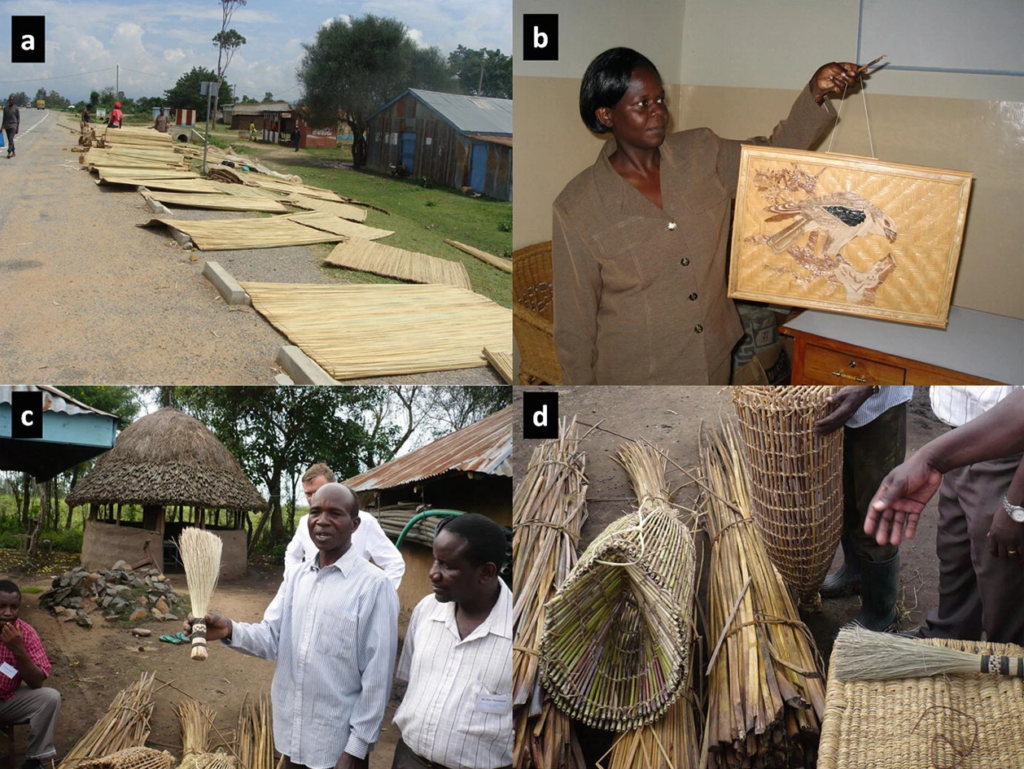
Farmer and painter Said Tarakhan, 60, draws on papyrus sheets at home.
July 28, 2021, Khaled DESOUKI / AFP
al-Qaramous in Sharqiyah province, in Egypt’s northern fertile Nile Delta region, northeast of the capital
Papyrus is not just a past.
Although papyrus paper-making technology has disappeared, and papyrus plants no longer thrive on the banks of the Nile, it still brings inestimable value to modern Nile residents.
Works & Economy
As papyrus revival in some villages and cities, more jobs are offered related to papyrus manufacturing. The ancient Egyptians used papyrus to make a large number of daily necessities, inclucing ropes and boats; today, in addition to selling these products as handicrafts, people can also provide low-cost and convenient daily necessities for local communities.
The revival of papyrus wetlands also boosts tourism. Visitors come to the papyrus community for their interest in wetland wildlife and ancient cultures. The tourism industry bring a large number of related jobs to locals, like accommodation and catering.
Clean Energy & Daily Necessities
Papyrus is a good biomass fuel. It grows quickly and doesn’t take too many nutrients from the soil, easy to harvest, and cheap. In Africa, papyrus is used as a fuel source in many places. When the papyrus ceased to flourish, people started cutting down the perennial trees to make fires, further contributing to ecological degradation. Bringing papyrus planting back to scale will stop people from burning the trees and reuse easily renewable papyrus as energy. T
oday, on banks of the Nile, many residents still use papyrus as burning energy. In addition, papyrus is also a raw material for many daily necessities. People use papyrus to make mats, brooms, fishing gear and other common life and work items.

Wetlands, Climate, and Environment
Countries across the Nile Basin are facing the issues of water use. Cities on the lower Nile often receive water that is polluted by cities upstream. The use of Nile water largely affects the foreign policy of Egypt towards upstream countries. wetlands have good ability of purifying water bodies. The existence of papyrus wetlands are able to reduce pollution and purify water bodies.
Papyrus plant also has a very strong ability of carbon sequestration. Papyrus grows quickly and has a massive root system. Its below-ground debris compartment can attain 20 times the above-ground biomass. [14] Papyrus is an ideal carbon sequestering plant. If overcultivated agricultural land can be restored to papyrus wetlands, the land’s ability of handling gaseous carbon will be greatly improved.
In ancient times, the wetlands of the Nile could even support large animal populations like hippos and crocodiles. If the papyrus wetland can be revived, it will greatly restore the original ecological habitat of many kinds of animals and plants.